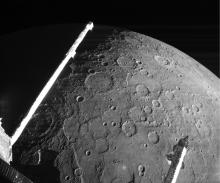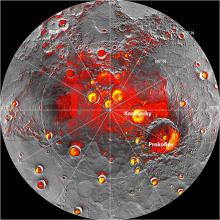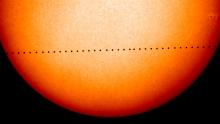Listen to today's episode of StarDate on the web the same day it airs in high-quality streaming audio without any extra ads or announcements. Choose a $8 one-month pass, or listen every day for a year for just $30.
You are here
Evening Mercury
The Moon isn’t the only body in the night sky that shows phases. So do the planets of the solar system. As our viewing angle to a planet changes, so does the lighting on the fraction of the hemisphere that faces our way.
That’s especially true for Venus and Mercury, the only two planets that are closer to the Sun than Earth is. As seen from Earth, they can range from almost new to almost full. That’s because we can see them when they pass between Earth and the Sun, so they’re almost completely in shadow, and when they’re almost behind the Sun, in the full glare of the Sun’s rays.
Through a small telescope, you can see that effect for yourself right now. Venus and Mercury are both in the western sky as night falls. Venus is the “evening star,” so it’s easy to pick out. Smaller Mercury is much harder to see. It looks like a moderately bright star, but it’s quite low in the sky.
Sunlight illuminates more than two-thirds of the hemisphere of Venus that faces Earth now.
Only a bit less of the visible part of Mercury is in the sunlight this evening, so it looks similar to Venus. But Mercury will drop toward the Sun over the next few evenings. As it does, it’ll move a bit closer to the line between Earth and the Sun. So each evening, less and less of the hemisphere that faces our way will be in the light. In a bit more than a week, only about one-sixth of its surface will be in daylight — making the planet look like a tiny crescent Moon.






